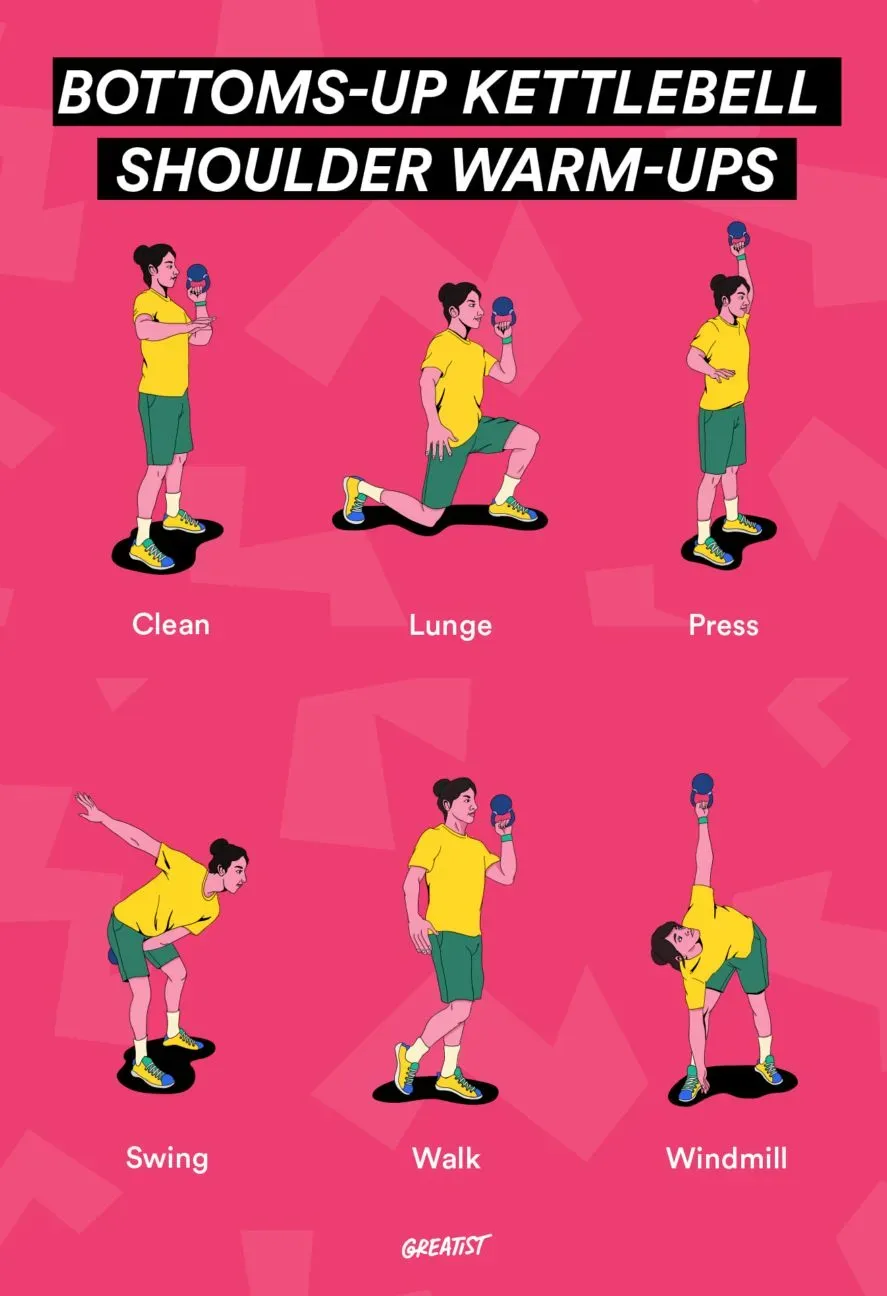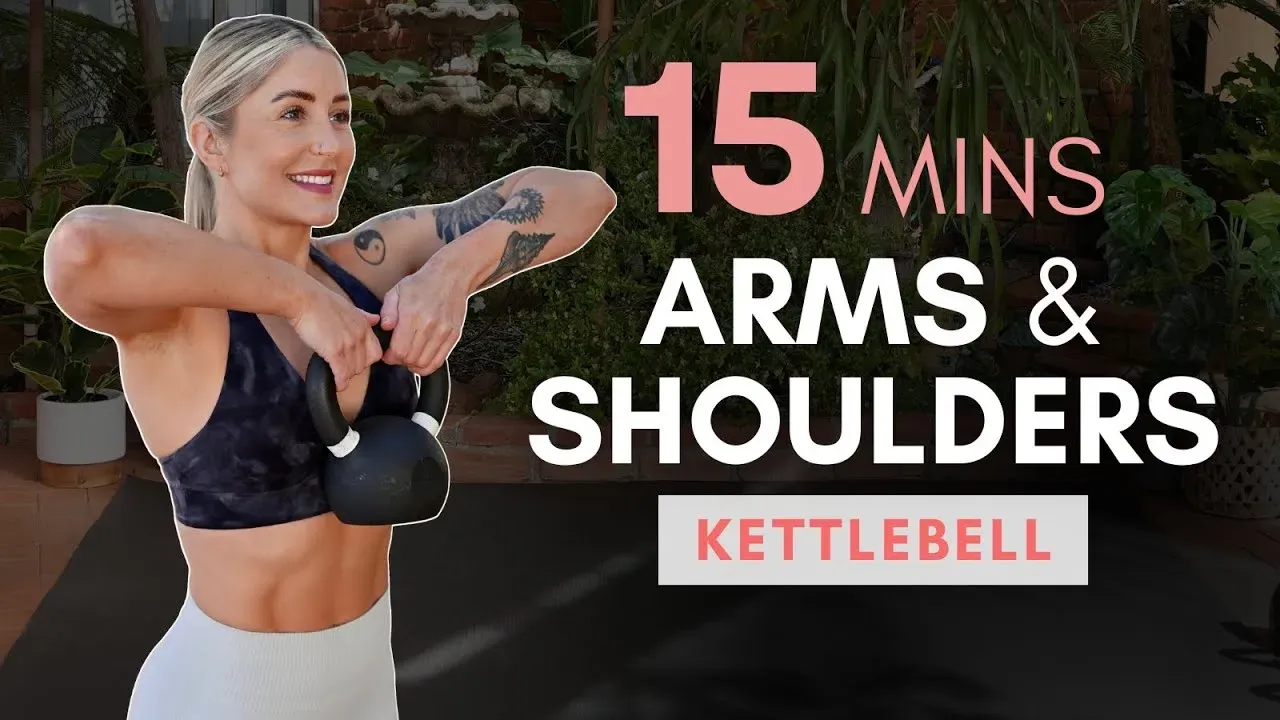Table of Contents
Let's be real, building strong, defined arms and shoulders can feel like a grind. You might be tired of endless bicep curls or shoulder presses that just don't seem to make a difference. Maybe you've heard the hype about kettlebells but aren't sure how they actually target those upper body muscles, beyond just swinging them around like a madman. Traditional weight training often isolates muscles, which is fine, but kettlebells offer a different kind of challenge.
Why Kettlebells Hit Your Arms and Shoulders Differently

Why Kettlebells Hit Your Arms and Shoulders Differently
It's All About That Offset Weight
Look, a dumbbell is pretty balanced. The weight is evenly distributed on both sides of the handle. Your body knows what to expect; it's a predictable load. A kettlebell? Not so much. The weight is below the handle. This offset center of mass changes everything for your kettlebell arm and shoulder workouts.
When you lift, press, or swing a kettlebell, that weight is constantly trying to pull your hand and arm in different directions. Your muscles, especially those around your shoulder joint and down your arm, have to work overtime just to stabilize the bell. It's not just about lifting the weight; it's about controlling it. This constant fight for control engages smaller, stabilizing muscles you might miss with traditional weights, leading to more functional strength and resilience.
Dynamic Movements Demand More Work
Think about a standard bicep curl with a dumbbell. It's a pretty linear movement. Up, down, repeat. Now picture a kettlebell clean or snatch. The weight is moving through space, accelerating and decelerating. Your arms and shoulders aren't just lifting; they're absorbing force, directing momentum, and stabilizing the weight as it changes position rapidly.
These dynamic, ballistic movements inherent to kettlebell training force your shoulder girdle and arm muscles to act as shock absorbers and power generators simultaneously. It builds explosive strength and endurance that static lifts often don't. It's the difference between pushing a car and catching and redirecting a medicine ball – both are work, but they challenge your body in fundamentally different ways, making kettlebell arm and shoulder workouts uniquely effective.
So, what does this mean for your gains?
- You build more resilient joints, especially shoulders.
- Your grip strength sees a significant boost.
- You engage more muscle fibers overall in the movement.
- Functional strength that translates to real-world activities improves.
Essential Kettlebell Arm and Shoulder Exercises

Essential Kettlebell Arm and Shoulder Exercises
Essential Kettlebell Arm and Shoulder Exercises
so you're sold on the "why" behind kettlebells for your upper body. Now for the "how." Forget the fancy stuff for a minute; mastering the basics is where the real magic happens for effective kettlebell arm and shoulder workouts. We're talking about movements that directly load those muscles while still leveraging the unique kettlebell physics we just discussed. These aren't just isolated curls; they're compound movements or variations that demand more from your stabilizers and connective tissue.
- Kettlebell Overhead Press: A classic, but the kettlebell's offset weight makes it tougher on shoulder stability.
- Kettlebell Bent-Over Row: Great for back and biceps, the grip challenge adds extra forearm work.
- Kettlebell Floor Press: Provides a stable base to really focus on chest, triceps, and front deltoids.
- Kettlebell High Pull: A dynamic move hitting shoulders, traps, and upper back with explosive power.
- Kettlebell Bicep Curl (Wait, Really?): Yes, but done correctly, often with a focus on controlling the eccentric phase.
- Kettlebell Tricep Extension: Can be done overhead or lying down, the handle grip provides a different feel.
Building Your Kettlebell Arm and Shoulder Workout Routine

Building Your Kettlebell Arm and Shoulder Workout Routine
Putting It All Together
so you've got the moves. Now, how do you actually build a solid plan for your kettlebell arm and shoulder workouts? It's not just about doing random exercises; you need structure. Think about your goals: are you chasing strength, endurance, or maybe a bit of both? For building strength, you'll want fewer reps (say, 5-8) with heavier weight, focusing on compound lifts like the overhead press and bent-over row. If endurance is the name of the game, lighter weight and higher reps (10-15 or more) with exercises like high pulls and even those controlled bicep curls will serve you better. A good starting point is often combining a push (like press) with a pull (like row) and maybe a dynamic movement (like high pull) in a circuit or set structure.
- Start with a warm-up (dynamic stretches, light swings).
- Choose 3-5 exercises focusing on different movement patterns.
- Decide on reps/sets based on your goal (strength vs. endurance).
- Allow adequate rest between sets (longer for strength, shorter for endurance).
- Cool down with static stretches.
Mastering Form for Effective Kettlebell Arm and Shoulder Workouts

Mastering Form for Effective Kettlebell Arm and Shoulder Workouts
Start Light, Seriously
Look, I get it. You see someone swinging a monster bell and think, "Yeah, I can do that." Stop right there. When you're starting out with kettlebell arm and shoulder workouts, especially with movements that are new to you, ego is the fastest way to an injury. These aren't dumbbells. The offset weight and dynamic nature mean you need to learn how to control the bell, not just lift it. Starting with a weight that feels almost too light allows you to focus entirely on the path of the kettlebell, how your body moves, and where you feel the tension. You're building a movement pattern, a motor skill, before you try to load it heavily. Think of it as learning to dance before you try to carry someone across the floor.
Trying to muscle through reps with bad form because the weight is too heavy is counterproductive. It teaches your body bad habits and puts unnecessary strain on your joints. A light weight, executed perfectly, is infinitely more effective than a heavy weight done poorly. Your shoulders will thank you later. So, swallow that pride, grab a lighter bell, and feel the movement.
Common Pitfalls and How to Dodge Them
Even with a light weight, form can get sloppy. It's easy to let your shoulders creep up towards your ears during presses, or round your back during rows. These little cheats rob your target muscles of work and invite trouble. For kettlebell arm and shoulder workouts, paying attention to alignment is key. Keep your core engaged – it's your base of operations for everything. Shoulders should generally stay packed down, away from your ears, unless the movement specifically dictates otherwise (like a shrug). Your wrist should stay relatively neutral, not bent awkwardly, especially during presses or racks.
Another classic error? Rushing the eccentric (lowering) phase. Controlling the weight on the way down is just as important, if not more so, than lifting it. It builds strength and helps prevent injuries. Think of lowering the bell with the same focus you used to lift it. If you're wobbling or losing control, the weight is probably too heavy, or you need to slow down and reset your focus.
Here are a couple of common form fixes:
- Pressing: Stop arching your back. Tuck your tailbone slightly and brace your core hard before pressing overhead.
- Rowing: Avoid rounding your shoulders. Think about pulling your shoulder blades together as you row, keeping your chest open.
- High Pulls: Don't just yank with your arms. Initiate the movement with a hip drive, letting that momentum carry the bell upwards.
Consistency Trumps Intensity (Initially)
Mastering form isn't a one-and-done deal. It's an ongoing process. Every time you pick up the kettlebell for your arm and shoulder workouts, treat it as a chance to refine your technique. Even experienced lifters constantly check their form. Film yourself if you can – what you *feel* like you're doing and what you're *actually* doing can be two very different things. Don't be afraid to drop the weight if you notice your form slipping during a set. It's not failure; it's smart training.
Listen to your body. Pain is not just weakness leaving the body; sometimes it's your body telling you that you're doing something wrong or pushing too hard too soon. A little muscle soreness is expected, but sharp pain in a joint? That's a red flag. Kettlebell training is incredibly effective when done correctly, but it demands respect for the movement and the weight. Prioritize good form over lifting heavy, especially when you're integrating these unique tools into your routine.
Wrapping Up Your Kettlebell Arm and Shoulder Journey
So, there you have it. Kettlebells aren't just for swings and squats, though those are great too. Integrating kettlebell arm and shoulder workouts into your routine provides a dynamic challenge that static weights often miss. You've got the tools now – understanding why they work, a selection of exercises, ideas for structuring your time, and the crucial reminder that form trumps ego every single time. It won't be magic, and it won't happen overnight just because you bought a fancy bell. Consistency matters, and paying attention to how your body moves is non-negotiable. Start light if you need to, focus on quality over quantity, and you might just find those stubborn arm and shoulder goals aren't so out of reach after all.